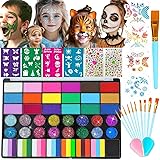Unlocking Playtime Potential: The Developmental Wonders of Slice Food Toys
The engaging visual of children interacting with slice food toys, as might have been seen in the video above, often captivates viewers with its simplicity and charm. However, beneath the surface of this seemingly straightforward play activity lies a rich tapestry of developmental benefits for young children. Many parents are continuously searching for toys that not only entertain but also actively contribute to their child’s growth and learning. These colorful, connectable play food items, designed to be ‘cut’ apart and put back together, offer a surprisingly multifaceted solution to fostering crucial early childhood skills.
Far from being just another item in the toy box, slice food toys are recognized for their profound impact on various aspects of a child’s development. Through their design, they cleverly integrate educational principles into an enjoyable format, making learning an organic part of playtime. This type of toy is particularly beneficial during the preschool years when children are rapidly acquiring new abilities and understanding the world around them. Understanding these hidden advantages can help parents make more informed choices about the play materials provided for their children.
Cultivating Fine Motor Skills and Dexterity
One of the most immediate and observable benefits derived from engaging with slice food toys is the enhancement of fine motor skills. The act of gripping a small, plastic knife or toy utensil is a precise movement that strengthens the muscles in a child’s hands and fingers. Such controlled actions are vital for developing the dexterity needed for future tasks, including writing, buttoning clothes, and using cutlery. Repeated practice with these toys helps to refine the pincer grasp and overall hand strength, which are fundamental components of early learning.
Furthermore, the process of aligning the two halves of a fruit or vegetable, then pressing them together to secure the Velcro or magnetic connection, demands considerable coordination. This particular action requires a delicate balance of force and precision, contributing significantly to improved control over small movements. As children repeatedly perform these actions, their hand muscles become more adept, and their movements grow smoother and more intentional. These foundational skills are patiently built, preparing young hands for a myriad of complex activities later in life.
Enhancing Hand-Eye Coordination in Play
The intricate task of “slicing” play food provides an excellent platform for developing superior hand-eye coordination. Children must visually assess where the toy knife needs to be placed on the food item and then guide their hand to execute the cut accurately. This continuous feedback loop between what is seen and what is done is invaluable for integrating visual and motor systems. The satisfying “snip” sound or the gentle pull of separating pieces further reinforces the success of their action, encouraging continued engagement.
As children grow more confident, more complex cutting paths might be attempted, such as navigating around seeds or separating smaller segments of a toy orange. This progression naturally encourages a higher level of concentration and precision, further honing their ability to coordinate their visual perception with their manual movements. Such development is not limited to play; it translates directly into improved abilities in drawing, sports, and other daily activities where visual input guides physical action. The visual-motor integration fostered by these toys is a cornerstone of cognitive and physical development.
The World of Pretend Play and Imagination
Slice food toys are exceptional catalysts for imaginative and pretend play, allowing children to step into various roles and construct their own narratives. A simple plastic apple can become part of a grand dinner party, a grocery store shopping trip, or a picnic in the park. This type of open-ended play is crucial for developing creativity and problem-solving skills, as children are given the freedom to direct their own play scenarios without rigid instructions. The ability to imagine and enact different situations is a powerful cognitive exercise.
Through role-playing, children often mimic the actions of adults they observe, such as cooking, serving, or grocery shopping. This imitation is a vital part of learning about social roles and understanding the world around them. Narratives are developed, characters are invented, and dialogue is created, all contributing to language development and storytelling abilities. The unstructured nature of pretend play with these toys supports an environment where children can experiment with ideas, express emotions, and develop a deeper understanding of social interactions in a safe, imaginative space.
Sensory Engagement and Exploration Through Play
While the sounds in the video might have primarily been auditory, slice food toys also offer a rich sensory experience that goes beyond mere cutting noises. The tactile sensation of the smooth plastic, the gentle resistance of the Velcro or magnets, and the visual appeal of brightly colored food items all contribute to a multi-sensory engagement. Children learn through their senses, and these toys provide varied sensory input that can be both stimulating and calming. The different textures and shapes of the food items are explored through touch and sight.
The satisfying sound of the toy pieces “slicing” apart or snapping back together provides immediate auditory feedback, reinforcing the success of the action. This sensory feedback is crucial for young learners, as it helps solidify their understanding of cause and effect. Visual discrimination is also enhanced as children differentiate between various colors and forms, identifying different types of fruits, vegetables, and other food items. This holistic sensory engagement helps in developing a child’s understanding and processing of their environment.
Early Cognitive Development Through Play Food
Engagement with slice food toys contributes significantly to a child’s early cognitive development in several ways. The recognition of different food items, their colors, and their shapes is an important classification skill that is naturally practiced during play. Children learn to identify a red tomato versus a yellow banana, or a round orange versus an elongated carrot. This categorization ability forms a foundational part of mathematical and logical thinking.
Furthermore, concepts such as whole and half are introduced in a tangible way when a food item is “cut” into pieces. Understanding that two halves make a whole is a rudimentary mathematical concept that is made accessible and concrete through these toys. Sequencing skills are also developed as children might follow a simple recipe or serve a meal in a particular order during pretend play. These seemingly simple interactions are powerful learning opportunities, fostering an understanding of basic concepts and encouraging logical thought processes.
Social and Emotional Growth with Play Food Sets
Although the video may have featured a single child, slice food toys are also instrumental in fostering social and emotional growth, especially when played with alongside others. Opportunities for sharing, taking turns, and cooperative play naturally arise when children engage in pretend cooking or serving meals together. These interactions help children practice crucial social skills, learning to negotiate and compromise as they play out various scenarios. Such collaborative play is a cornerstone of developing positive peer relationships.
Children can also express a wide range of emotions through pretend play with these toys, from joy in creating a “feast” to frustration when a piece doesn’t fit perfectly. This safe outlet for emotional expression allows them to process feelings and develop empathy by understanding different perspectives. The development of self-confidence is also nurtured as children successfully complete tasks, such as “cooking” a meal or serving their friends, building a sense of accomplishment and independence. These emotional milestones are subtly yet effectively supported by engaging with slice food toys.
Choosing the Right Slice Food Toys for Your Child
When selecting slice food toys for children, several factors should be considered to ensure both safety and maximum developmental benefit. Material quality is paramount; look for durable, non-toxic plastics or wood that can withstand rigorous play. The sizes of the pieces should be appropriate for the child’s age, preventing choking hazards for younger children. Furthermore, a variety of food items can introduce children to a broader vocabulary and different shapes and colors, enriching their learning experience considerably.
Consider toys that feature different connection mechanisms—some use Velcro, others magnets, and some simply slot together. Each type offers a slightly different tactile experience and challenge, which can further engage children’s fine motor skills. Investing in a diverse set that includes various fruits, vegetables, and perhaps even some baked goods can stimulate more elaborate pretend play scenarios. Ultimately, the best slice food toys are those that are safe, engaging, and encourage imaginative and developmental exploration for young learners.
Slice food toys, like those seen in the video, provide a wonderful avenue for children to develop a wide range of essential skills, from fine motor coordination to imaginative play. These versatile playthings continue to be a valuable resource for fostering holistic growth in young children, making them much more than just a source of entertainment.







